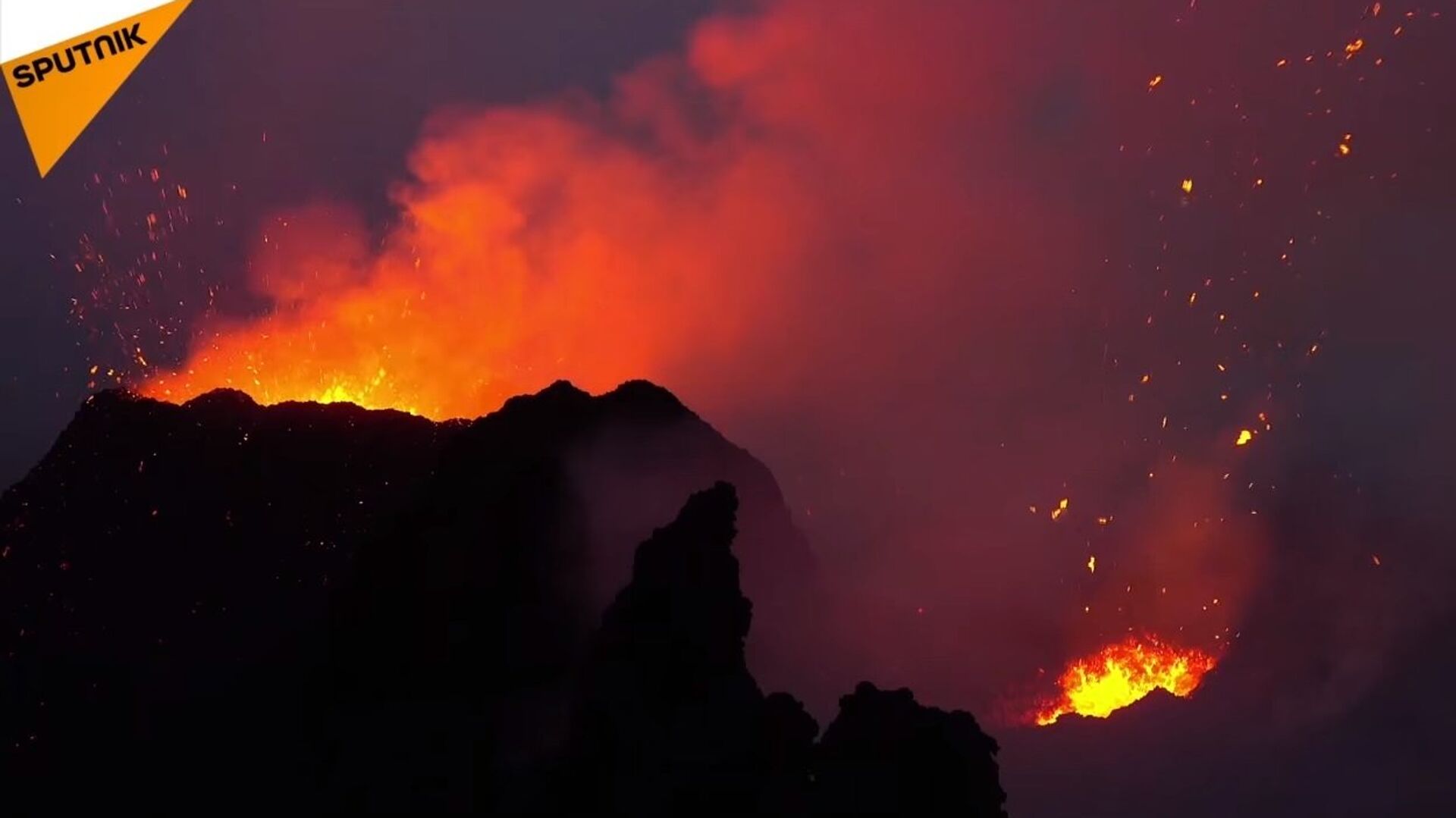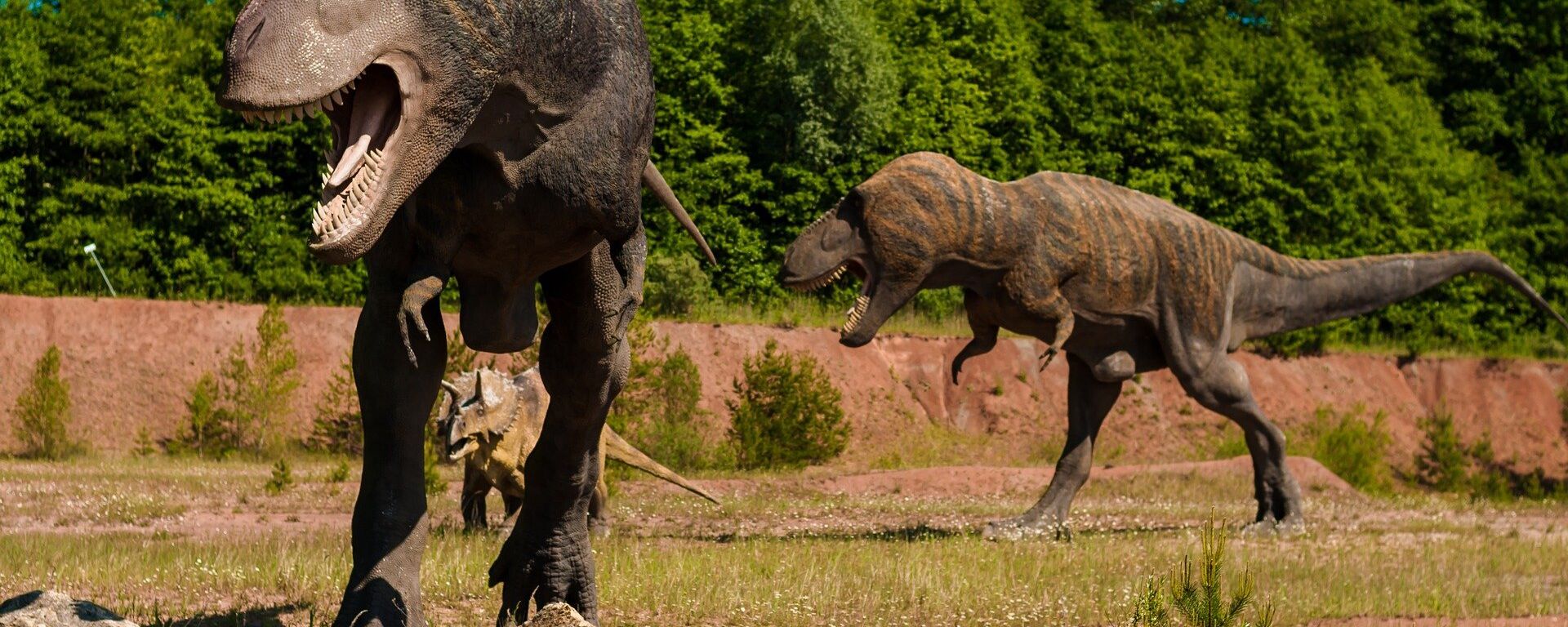https://sputnikglobe.com/20220912/extinction-causing-volcanic-eruptions-triggered-by-slowing-tectonic-plates-study-finds-1100701729.html
Extinction-Causing Volcanic Eruptions Triggered by Slowing Tectonic Plates, Study Finds
Extinction-Causing Volcanic Eruptions Triggered by Slowing Tectonic Plates, Study Finds
Sputnik International
Irish scientists have determined that two geological phenomena seen 183 million years ago were linked, helping to explain a massive extinction of plant and... 12.09.2022, Sputnik International
2022-09-12T23:43+0000
2022-09-12T23:43+0000
2022-09-12T23:43+0000
science & tech
extinction
volcano eruption
geology
tectonic shift
https://cdn1.img.sputnikglobe.com/img/106414/49/1064144989_0:6:1250:709_1920x0_80_0_0_699472406617aea6dc1358b98dfd8aa2.jpg
Roughly 183 million years ago, the dissolved oxygen that fish and other gill-breathing creatures need to breathe mysteriously disappeared from Earth’s oceans, triggering a mass extinction event known as the Toarcian Oceanic Anoxic Event (TOAE), or Jenkyns Event. This and other events have been connected with Large Igneous Provinces (LIPs), the geological name for increased periods of volcanic eruption.According to new research by scientists at Trinity College Dublin’s School of Natural Sciences, the LIPs are connected to a slowing-down of tectonic plates, the segments of Earth’s crust that slide along on top of the molten mantle, shaping and reshaping our continents and seas.Their findings were published in Science Advances on Friday.The scientists arrived at their conclusions by examining ancient mudstone deposits obtained from a 1.5-kilometer-deep borehole in Wales, dating to the time of the Jenkyns Event, 183 million years ago.“It seems it is only when the speed of continental plate movement slows down to near zero that magmas from mantle plumes can effectively make their way to the surface, causing major large igneous province volcanic eruptions and their associated climatic perturbations and mass extinctions,” they explained.The massive volcanic eruptions would have poured carbon dioxide, a greenhouse gas that accelerates global warming, into Earth’s atmosphere, along with other noxious gasses. In addition to triggering a sudden warming in climate, it would have also caused acidification of the oceans, helping to kill off vulnerable creatures. Interestingly, the Jenkyns Event is associated with the mass death of gill-breathing creatures, such as bivalves, but not marine reptiles, like the Ichthyosaurs that stalked the seas.Another, larger of these mass extinction events, known as the Triassic–Jurassic extinction event, had occurred just 18 million years earlier, killing off roughly one-third of sea creatures and most land-based life except for plants, dinosaurs, pterosaurs, and mammals, paving the way for their domination of the land for millions of years. That event was also caused by a LIP.
https://sputnikglobe.com/20220529/new-study-seemingly-ends-scientific-debate-on-long-standing-dinosaur-mystery-1095862879.html
Sputnik International
feedback@sputniknews.com
+74956456601
MIA „Rosiya Segodnya“
2022
News
en_EN
Sputnik International
feedback@sputniknews.com
+74956456601
MIA „Rosiya Segodnya“
Sputnik International
feedback@sputniknews.com
+74956456601
MIA „Rosiya Segodnya“
science & tech, extinction, volcano eruption, geology, tectonic shift
science & tech, extinction, volcano eruption, geology, tectonic shift
Extinction-Causing Volcanic Eruptions Triggered by Slowing Tectonic Plates, Study Finds
Irish scientists have determined that two geological phenomena seen 183 million years ago were linked, helping to explain a massive extinction of plant and animal life observed at that time.
Roughly 183 million years ago, the dissolved oxygen that fish and other gill-breathing creatures need to breathe mysteriously disappeared from Earth’s oceans, triggering a mass extinction event known as the Toarcian Oceanic Anoxic Event (TOAE), or Jenkyns Event. This and other events have been connected with Large Igneous Provinces (LIPs), the geological name for increased periods of volcanic eruption.
According to new research by scientists at Trinity College Dublin’s School of Natural Sciences, the LIPs are connected to a slowing-down of tectonic plates, the segments of Earth’s crust that slide along on top of the molten mantle, shaping and reshaping our continents and seas.
Their findings were
published in Science Advances on Friday.
The scientists arrived at their conclusions by examining ancient mudstone deposits obtained from a 1.5-kilometer-deep borehole in Wales, dating to the time of the Jenkyns Event, 183 million years ago.
“Scientists have long thought that the onset of upwelling of molten volcanic rock, or magma, from deep in Earth’s interior, as mantle plumes, was the instigator of such volcanic activity, but the new evidence shows that the normal rate of continental plate movement of several centimeters per year effectively prevents magma from penetrating Earth’s continental crust,” Micha Ruhl, Assistant Professor in Trinity’s School of Natural Sciences and leader of the research team, said in a news release about their report.
“It seems it is only when the speed of continental plate movement slows down to near zero that magmas from mantle plumes can effectively make their way to the surface, causing major large igneous province volcanic eruptions and their associated climatic perturbations and mass extinctions,” they explained.
“Crucially, further assessment shows that a reduction in continental plate movement likely controlled the onset and duration of many of the major volcanic events throughout Earth’s history, making it a fundamental process in controlling the evolution of climate and life at Earth’s surface throughout the history of this planet.”
The massive volcanic eruptions would have
poured carbon dioxide, a greenhouse gas that accelerates global warming, into Earth’s atmosphere, along with other noxious gasses. In addition to triggering a sudden warming in climate, it would have also caused acidification of the oceans, helping to kill off vulnerable creatures. Interestingly, the Jenkyns Event is associated with the mass death of gill-breathing creatures, such as bivalves, but not marine reptiles, like the
Ichthyosaurs that stalked the seas.
Another, larger of these
mass extinction events, known as the Triassic–Jurassic extinction event, had occurred just 18 million years earlier, killing off roughly one-third of sea creatures and most land-based life except for plants, dinosaurs, pterosaurs, and mammals, paving the way for their domination of the land for millions of years. That event was also caused by a LIP.




